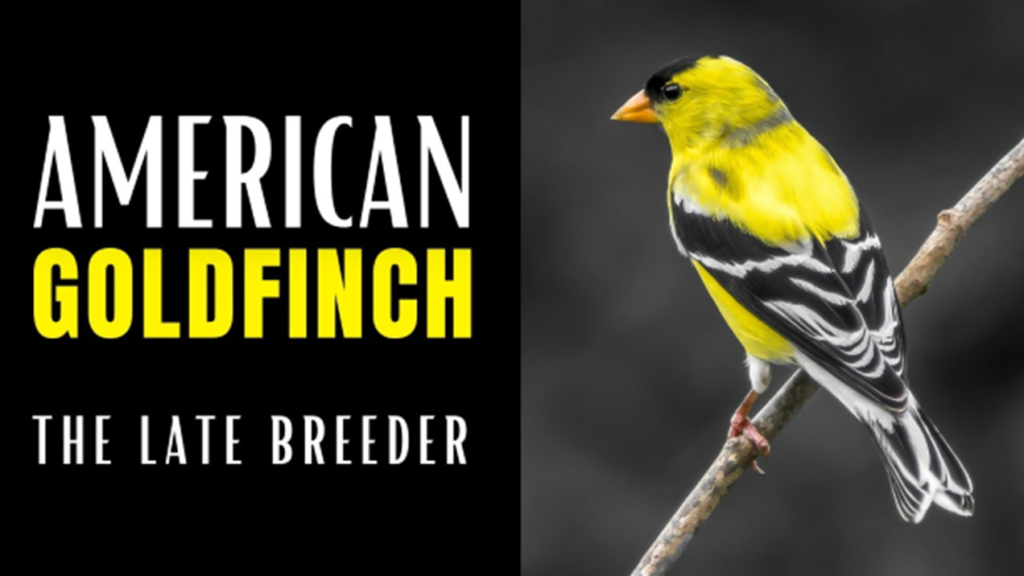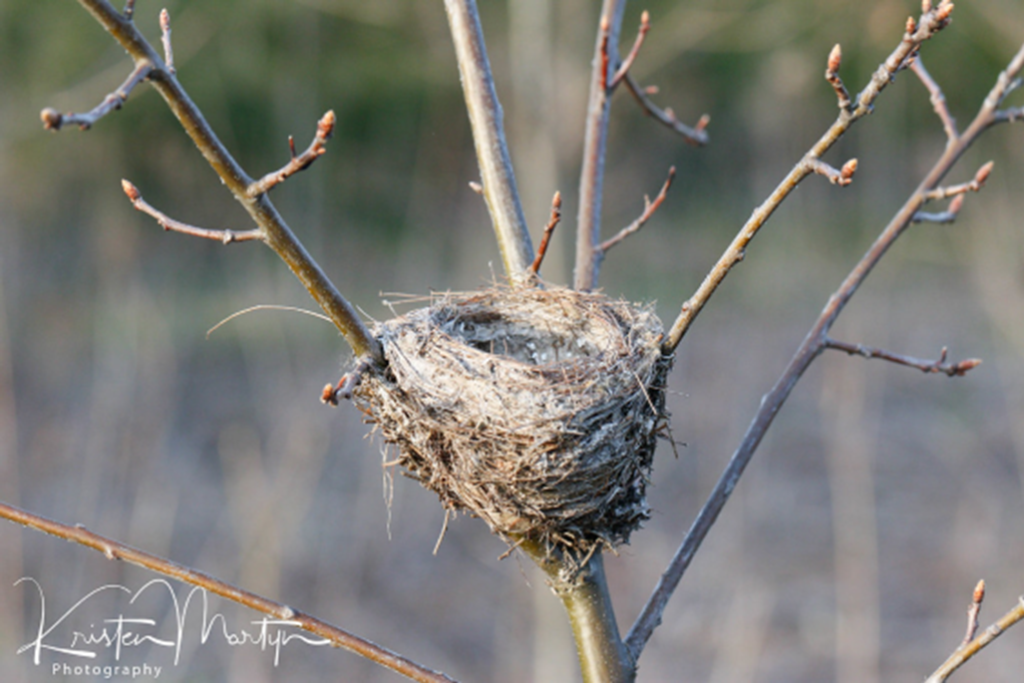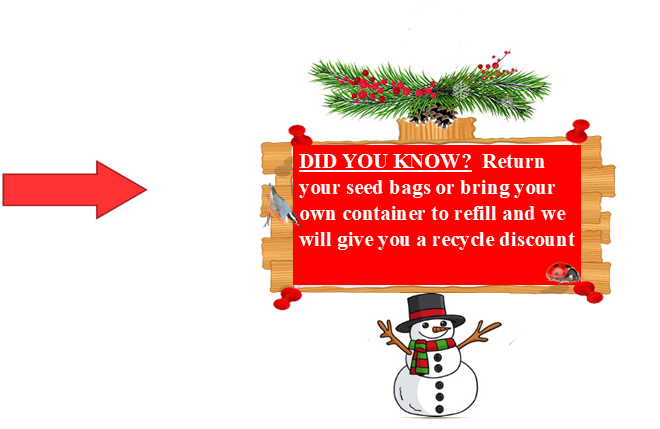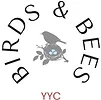LINK TO PDF NEWSLETTER DOWNLOAD

American goldfinches feed their newborn broods a strict diet of regurgitated seeds rather than high-protein insects or a mix of seeds and insects favoured by other passerine (perching) birds. Coincidentally, this habit offers a distinct advantage against an occasional parasite, the Brown cowbird. Cowbirds are known for depositing their eggs in other birds’ nest, where the large cowbird nestling often receives an unfair share of food from the unsuspecting parent, risking starvation for the other chicks. But baby cowbirds can’t survive off seeds, and a cowbird hatchling in a goldfinch nest is doomed.
Vegetarianism also influences nesting time. From the earliest red-winged blackbird to the last of the common yellowthroats, migrating birds generally get right to the business of establishing territories, building nests and raising young as soon as they reach their breeding grounds. This is especially true for those that double—or—triple brood. Like other songbirds, goldfinches pair up in the spring, but they wait until the thistles, milkweeds, and other wildflowers start going to seed in summer to breed and nest. At this time, each male selects his own territory, flying in circles around an open area dense with weeds and shrubs, preferably near a water source (even a reliable roadside ditch will do). Warbling from a high perch, he defends his area by chasing other males away. His mate selects a suitable site for a nest and constructs it over four to six days while he helps by gathering material.
A goldfinch nest can be hard to find amid summer foliage, but it’s easy to identify. Look for a sturdy, cup-shaped nest built into the fork of a branch in a sapling or large bush. Small twigs bark strips, and long plant fibers form the outside, which measures close to three inches across. Spider web silk acts as a glue to hold it together. The inside cup is deep, smooth, round, and firm. It is lined with catkins, bits of wool, and so much thistle and milkweed or cattail down that the pale, bluish-white eggs are almost hidden. Eventually the down becomes compacted during incubation and as the hatched chicks shift around. The nest is so tightly woven that it can fill up in a deluge of rain, sometimes drowning its
Unlike most birds, goldfinches do not continue to defend a territory once a family is started, and members of a flock move freely in and out of each other’s areas. They are social birds, flocking together in winter and amicably sharing bird feeders at any time.



